Did you know what your dog’s favorite thing is? Food! Dog trainers widely agree on using food-based rewards to boost training success. This shows why treat-obsessed dogs are ideal for training.
Their love for snacks fuels motivation, making them quick to learn and responsive to positive reinforcement. Food-motivated breeds excel in obedience tasks due to their engagement with training treats. However, their enthusiasm requires careful management to prevent obesity and excess weight.
According to PetMD, 59% of the dogs in the US are overweight, often linked to excessive treats. This makes it even more important for pet owners to monitor their dogs’ health and manage their weight issues carefully.
Here are seven treat-obsessed dog breeds, known for their snack-driven antics. Learn their unique traits, training tips, and how to manage their snack obsession for a healthy and happy life.
Dog Breeds Obsessed with Treats
1. Pug

The pug is an ancient breed that originated in China around 1600 BCE to 770 BCE. PetMD notes that they are over 2,000 years old and were originally bred as companions for royalty. Pugs are a popular dog breed that is food-enthusiastic.
This food-loving breed has been a loyal companion to humans for thousands of years. Their loving nature, often enhanced by those puppy dog eyes, makes them an ideal pet.
These treat-driven dogs are often easy to train. They are highly responsive to positive reinforcement. Pugs have an average lifespan of 13-15 years. Their small frames are prone to obesity.
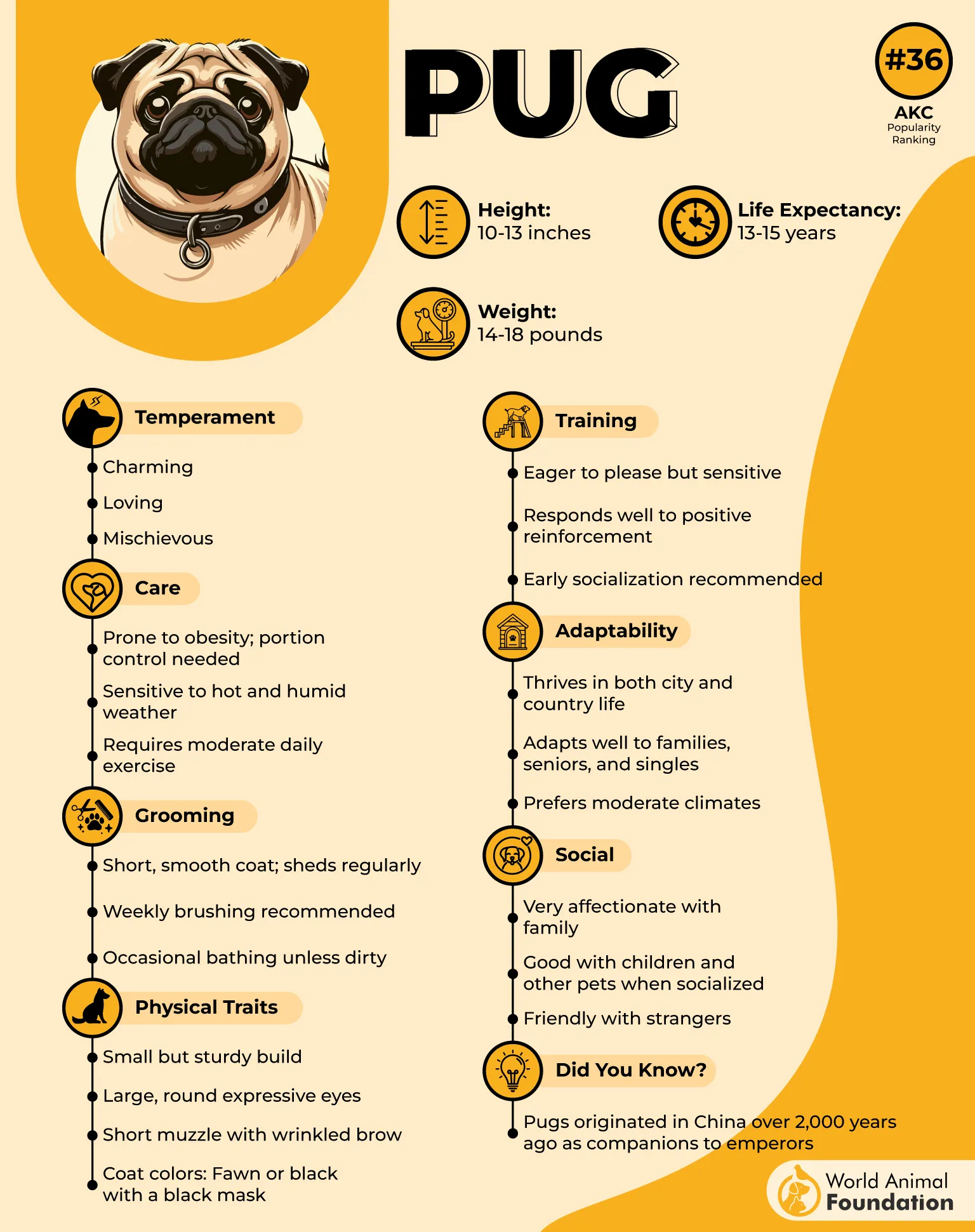
Given their enthusiasm for food, pug owners should prioritize a balanced diet with controlled portion sizes. It would help to maintain a healthy life. Regular veterinary checkups and regular exercise are crucial to keep your dog physically and mentally healthy.
2. Cocker spaniel

Cocker spaniels are food-obsessed dog breeds, and they will do nearly anything for a treat. Cocker spaniels are known for their strong need for human companionship and attention. Their affectionate nature can sometimes manifest as a strong desire to be with people all the time.
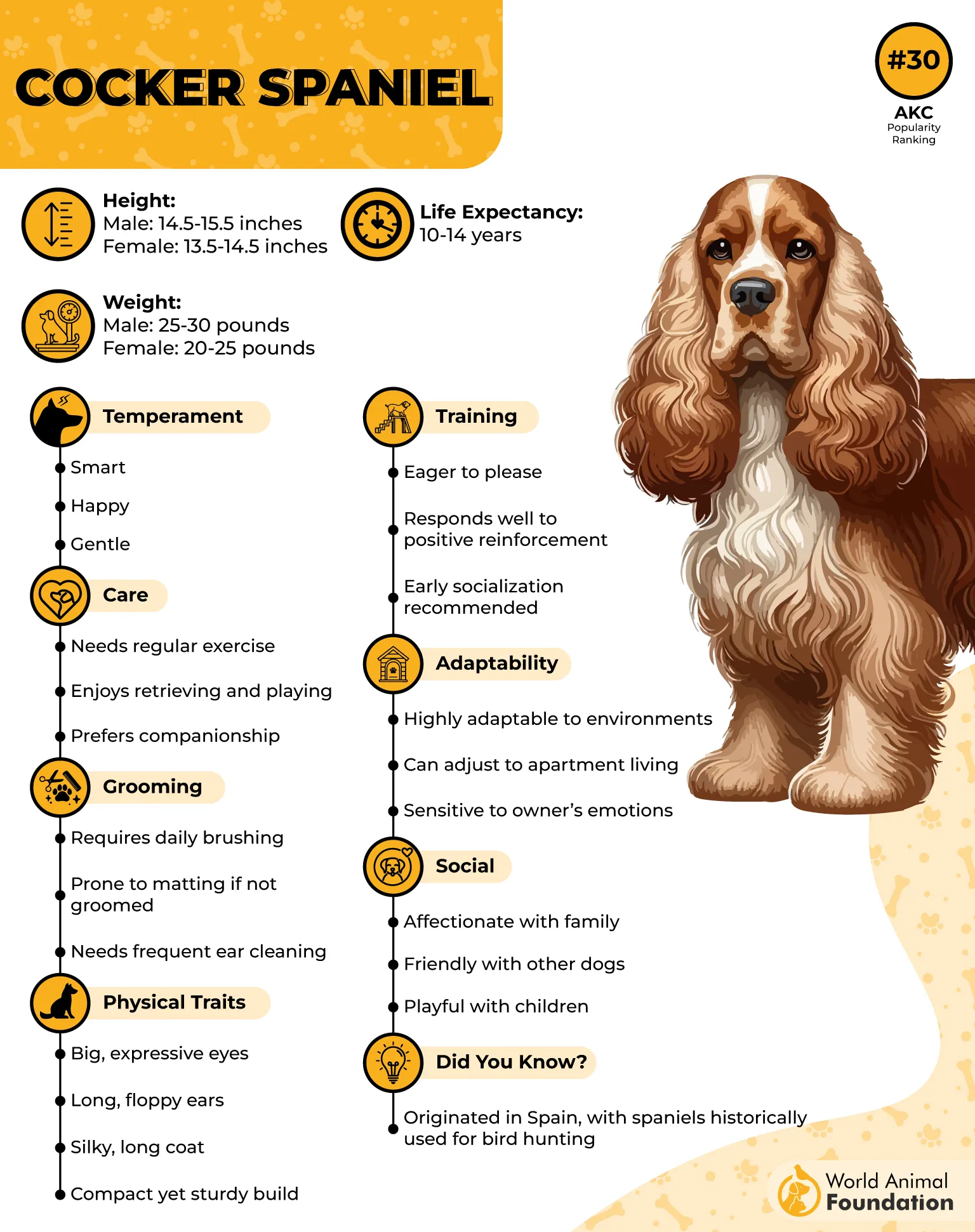
Cocker spaniels never forget about treats. They will just sit there staring at you, totally fixated on getting more snacks. It’s kind of crazy how much they love food.
AKC notes the cocker spaniel has deservedly often been in the ranks of the top dog breeds. Cocker Spaniels are known for their lively, adaptable, and friendly nature, making them a joyful addition to virtually any household.
Their kind and gentle temperament also makes them an excellent choice for first-time dog owners.
3. Labrador retrievers

The Labrador retriever stands out as an American favorite breed. They are renowned for their friendly and loyal nature, especially around meal times, due to their voracious appetite.
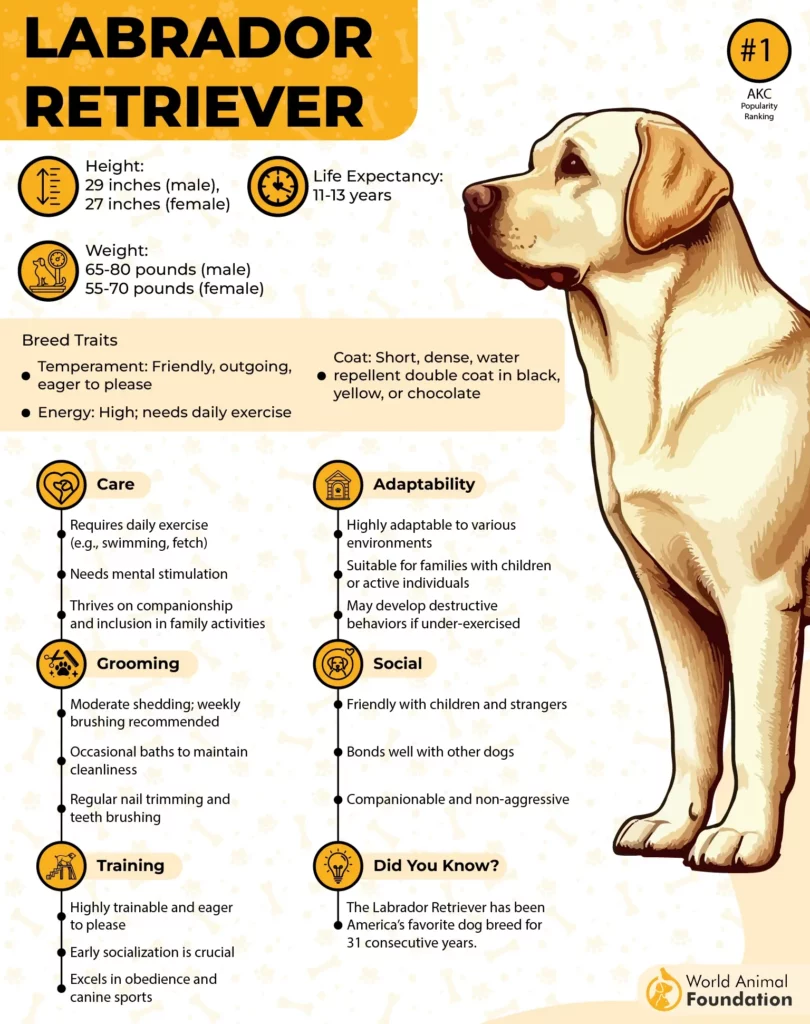
Labs are ideal for training, as they respond well to treats and have a natural desire to please their owner. This makes them enthusiastic participants in training. However, it comes with an increased risk of overfeeding, especially due to their muscular build.
Labrador retrievers require frequent meals to satisfy their healthy appetite. As a result, it is essential to monitor their calorie intake. Ensuring they receive a balanced diet is crucial to maintaining a healthy weight.
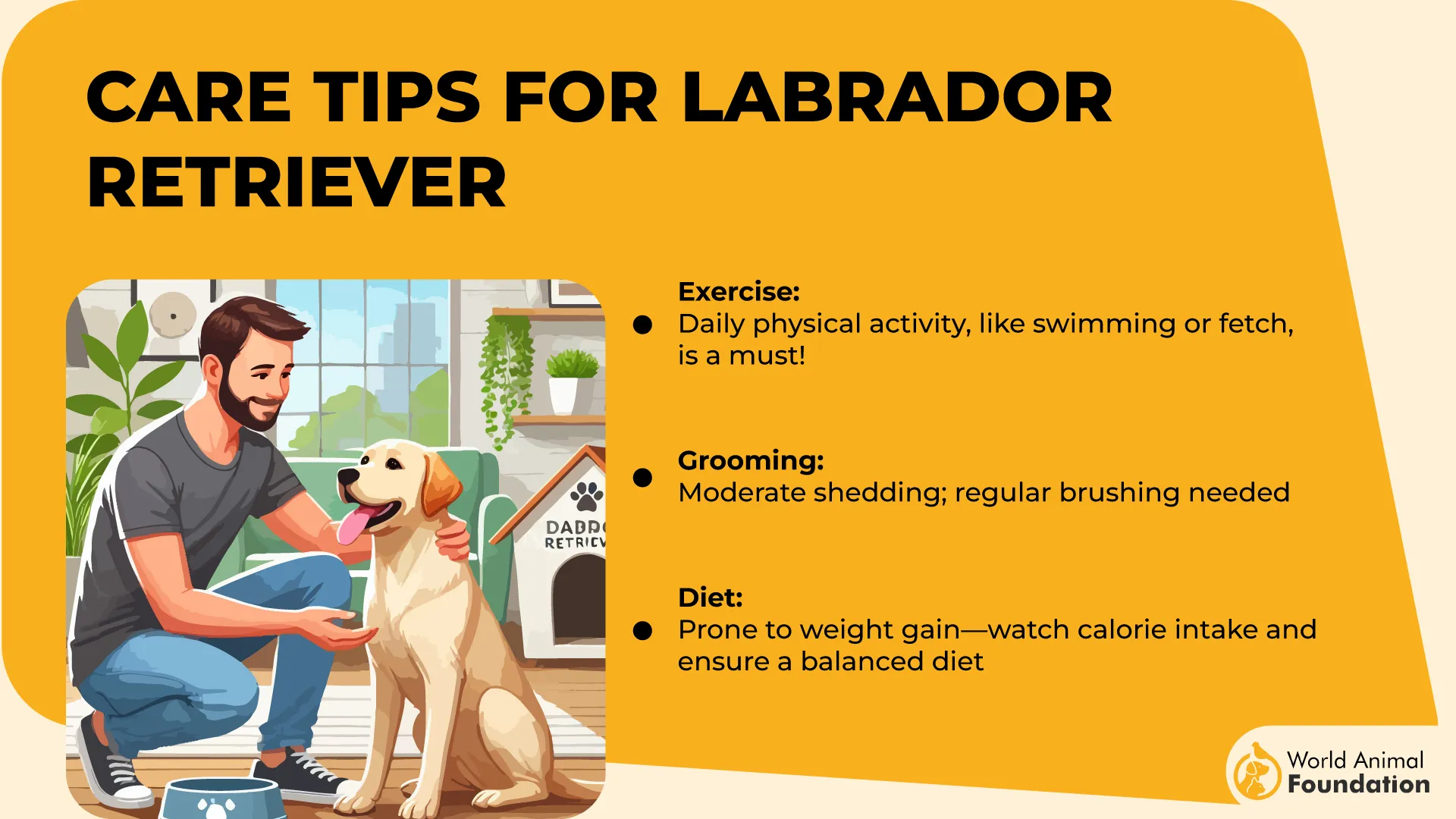
Labradors are intelligent, eager to please, and quick learners, making them highly trainable. Once they’ve mastered the basics, they thrive on learning new tricks and commands, which helps keep their minds active and engaged, as per Petplan.
4. Boxers
Boxers are food-oriented dogs bursting with energy whenever food is around. They are enthusiastic eaters. They are intelligent and loving companions of humans. Boxers thrive with proper socialization and training.
Originating in Germany, Boxers were initially bred for bull-baiting and later evolved into versatile working dogs. Today, they are cherished companions known for their loyalty, intelligence, and playful spirit.
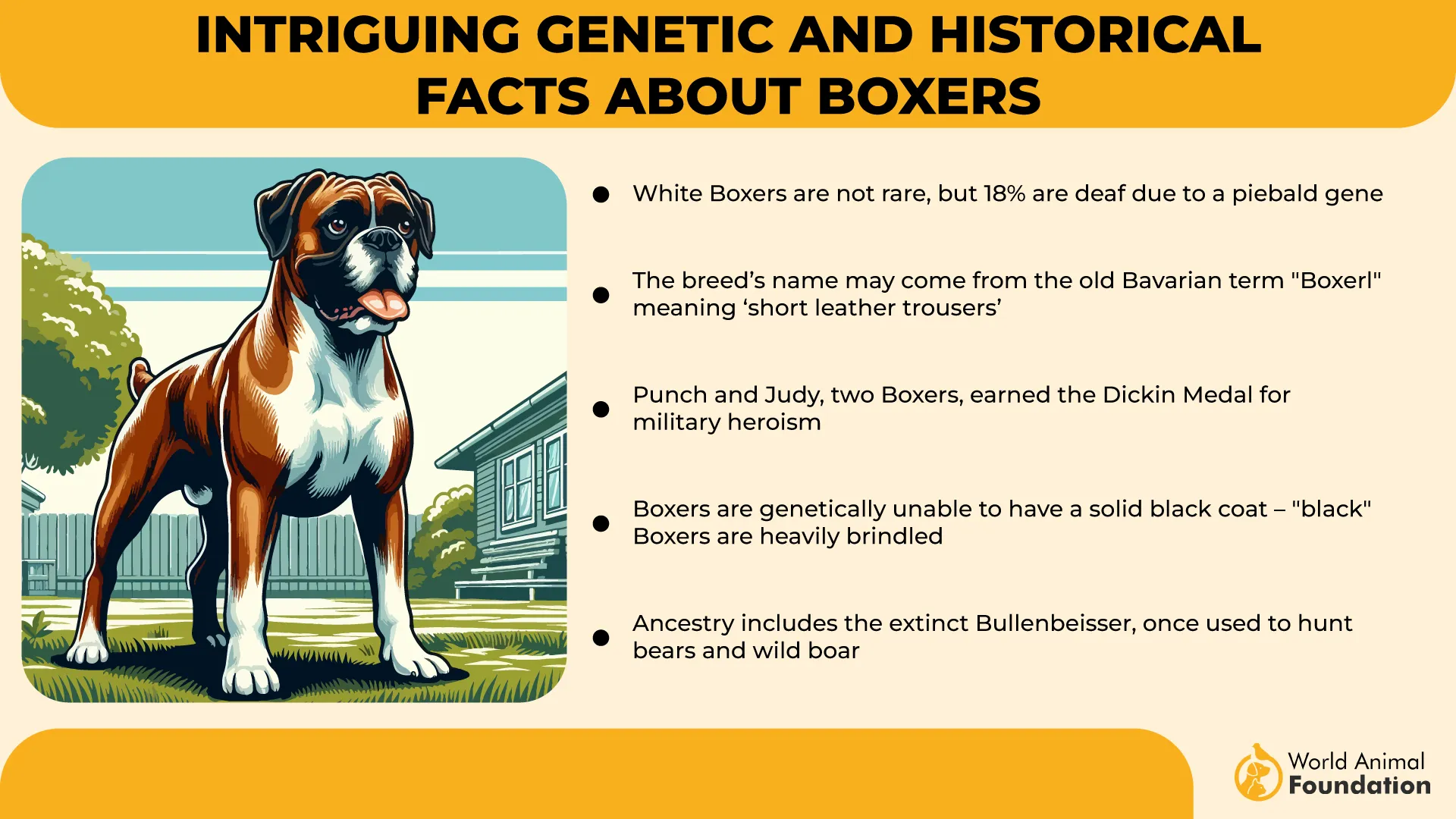
Their energetic personalities make them excellent family pets, especially for active households. Boxers are prone to obesity due to their genetic makeup. They need an ideal weight to maintain their energy levels.
Despite their love for food, try to maintain a balanced diet and exercise that stimulates both physical and mental health.
5. Beagle
Beagles are prone to overeating due to their historical roles as rabbit hunters, making them highly food-motivated. Their exceptional sniffing abilities can lead them into trouble, from trash can raids to uncovering hidden treats.
Owners must keep harmful things out of reach. To keep obedience training balanced, mix in praise, playtime, and affection alongside treats. In addition to treats, incorporating puzzle toys into training can help maintain their interest.
By considering a dog’s weight and activity level, owners can determine their eating requirements. Feeding dogs smaller portions based on their weight is crucial.
The AKC suggests addressing a Beagle’s strong instincts with structured training. Use high-value treats and clear commands to redirect their focus during walks, especially when they encounter other dogs.
6. Dachshund
Dachshunds are known for their persistent pursuit of food. This behavior is driven by a strong prey instinct that makes them determined hunters, like basset hounds.
Although Dachshunds are famous for their affectionate and playful nature, complemented by a strong food drive. Any Dachshund parent will tell you these dogs are fast eaters. They have an increased risk of obesity compared to other breeds due to their predisposition to back problems and potential ear infections.
As a result, it is essential for Dachshund owners to monitor their diet closely to prevent weight gain and other health-related issues.
Dachshunds come in two sizes and three coat types of various colors and patterns. These variations make them unique in appearance, offering a range of choices. for potential owners.
7. Golden Retriever
Golden retrievers are popular because of their loving personality. Their unrelenting love for food makes them perfect candidates for training using food rewards. With their irresistible begging nature, these furry friends use their charming expressions.
Even smaller treats make them happy. Their love for food is only matched by their love for belly rubs and ear scratches. Golden retriever puppies grow rapidly and should be on a low-calorie diet.
These enthusiastic eaters can face weight gain, which can increase the risk of bone disorders. For long-term health, it is essential to maintain a feeding schedule and exercise routine to keep him healthy. With proper care and attention, golden retrievers can live a happy and healthy life.
Golden Retrievers are widely regarded as intelligent, gentle-natured, and exceptionally affectionate dogs. Like most retriever breeds, they are calm, eager to please, and highly trainable, making them ideal companions for families and first-time owners alike.
Conclusion
It is essential to understand the top-most food-obsessed breeds. Managing their food obsession and cravings is crucial for their health. Portion control and healthy snack alternatives are effective strategies. Positive reinforcement training also helps.
Be patient and consistent in your approach. Prioritize their nutritional needs to ensure a happy and healthy life. With the right care, your friend can thrive. A balanced lifestyle is key to their well-being.
By taking control of their love for dog food, you strengthen your bond and promote a healthy relationship. Happy snaking and healthy living go hand-in-hand with responsible pet ownership, always and forever.


